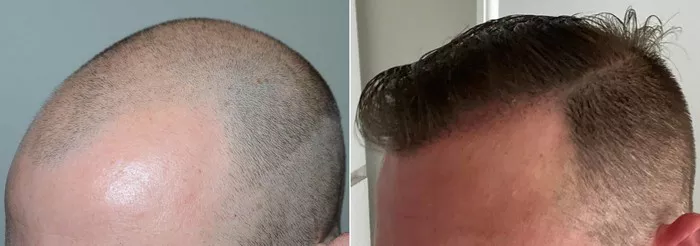Undergoing a Follicular Unit Extraction (FUE) hair transplant is a significant step toward achieving the desired head of hair. While the procedure is minimally invasive, ensuring proper post-operative care is crucial for optimal results. One aspect that patients often inquire about is how to sleep comfortably after an FUE hair transplant. This article unveils practical tips and insights to help individuals navigate the post-transplant sleep experience, promoting both comfort and successful recovery.
Understanding the Sensitivity Post-FUE
In the aftermath of an FUE hair transplant, the scalp becomes particularly sensitive. The tiny incisions made to extract individual hair follicles can create a level of discomfort and require special attention, especially during sleep. Consequently, adopting sleep practices that minimize pressure on the transplanted area is essential for a smooth recovery process.
The Initial Days: Sleeping Positions Matter
In the first few days after an FUE hair transplant, the positioning of the head during sleep plays a crucial role. To alleviate pressure on the transplanted area, it is advisable to sleep in a semi-upright position. This can be achieved by propping oneself up with additional pillows to create a gentle incline. Elevating the upper body not only minimizes contact with the transplanted area but also aids in reducing swelling, a common post-operative occurrence.
Choosing the Right Pillow
Selecting an appropriate pillow is paramount for ensuring a comfortable and supportive sleep environment after an FUE hair transplant. Opting for a soft yet supportive pillow that does not exert excessive pressure on the transplanted area is recommended. Additionally, using a U-shaped travel pillow can provide valuable support, preventing inadvertent contact with the transplanted region during sleep.
Avoiding Direct Contact
Direct contact with the transplanted area should be avoided, especially in the initial days after the procedure. Some patients find it helpful to sleep on their backs during this period, ensuring that the transplanted grafts remain undisturbed. If back sleeping is not a preferred position, individuals can explore side-sleeping options while being mindful of not pressing the transplanted area against the pillow.
Post-Transplant Care: A Nighttime Routine
In addition to adjusting sleeping positions, incorporating a nighttime routine can contribute to a more comfortable sleep experience after an FUE hair transplant. Gently cleansing the scalp before bedtime using a mild, recommended shampoo helps maintain hygiene without causing irritation. Patting the scalp dry with a soft towel, rather than rubbing, is another important practice to prevent unnecessary friction.
Applying any prescribed ointments or solutions before bedtime, as directed by the surgeon, is crucial for promoting healing and preventing infection. Adhering to the recommended post-transplant care regimen not only ensures the longevity of the results but also enhances overall comfort during sleep.
Hydration and Nutrition Impact Sleep Quality
While sleep positioning and post-transplant care are pivotal, overall health and hydration also play a role in sleep quality and recovery. Staying adequately hydrated supports the body’s healing processes, and maintaining a well-balanced diet contributes to overall well-being. Limiting caffeine intake in the hours leading up to bedtime can further enhance the quality of sleep.
Consulting with the Surgeon: Addressing Concerns
Open communication with the surgeon is a key component of a successful post-FUE hair transplant recovery. Patients are encouraged to discuss any concerns or discomfort they may be experiencing during sleep with their surgeon. Surgeons can provide personalized guidance and recommendations based on the individual’s unique circumstances, ensuring that the recovery process is as smooth and comfortable as possible.
Long-Term Considerations for Sleep Comfort
As the initial days post-FUE hair transplant pass, the scalp gradually heals, and sensitivity diminishes. However, adopting good sleep practices remains important for the long-term success of the transplant. Avoiding excessive pressure on the transplanted area, choosing a comfortable pillow, and maintaining a healthy sleep environment contribute to ongoing comfort and support the overall health of the newly transplanted hair.
See Also: FUE Hair Transplant Healing Time: All You Need To Know
Conclusion
Achieving a natural-looking and fuller head of hair through an FUE hair transplant is an exciting journey. Ensuring a comfortable and restful sleep experience during the recovery period is a critical aspect of the overall process. By understanding the sensitivity of the scalp post-transplant and implementing practical tips, individuals can navigate the initial days and weeks with confidence, promoting optimal healing and successful results. Remember, consulting with the surgeon and adhering to the recommended post-transplant care are integral to a comfortable and successful recovery.


